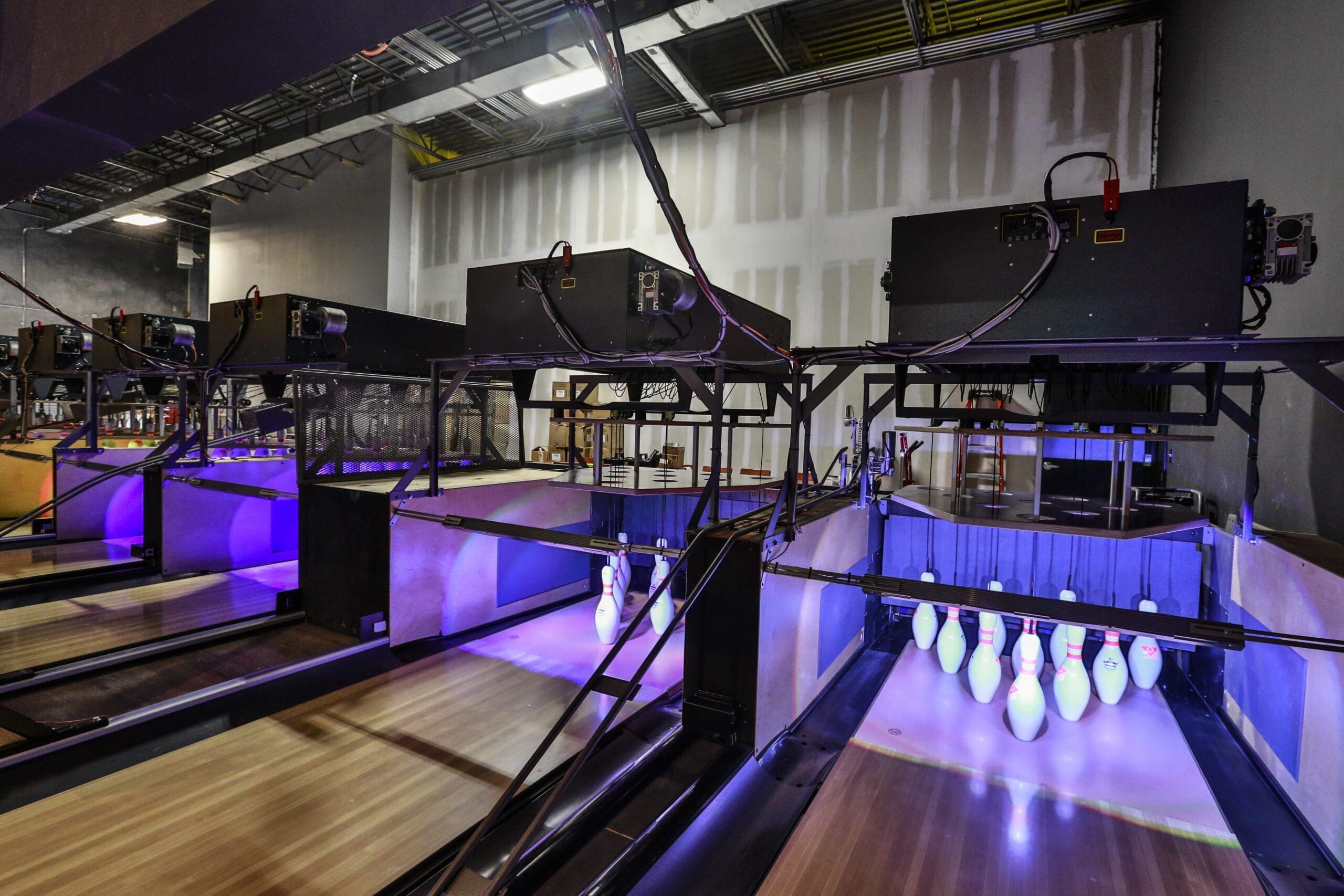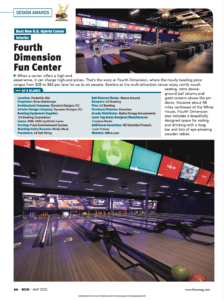As string pinsetters become more and more popular with Bowling Center owners, it’s natural that bowlers have concerns and questions about the change from freefall pinsetters to string pinsetters. Now that the USBC is testing string pinsetters for tournament and league play, we know it’s time to address the questions that we’ve been getting.
Answering your Questions and Concerns about String Pinsetters
Concern:
It seems like with a string pinsetter, strings can get tangled and pull down pins that otherwise wouldn’t have gone down
Answer:
Each pin is required to maintain a minimum of 65 inches of unobstructed slack in the string. This slack, with minimal resistance, allows for strings to come in contact with each other yet not affect other pins’ current positions. Because of this slacked string, tangles do not affect the outcome of the final score.
Concern:
I think that string pinsetters are fine for recreational games, but not for leagues and tournaments. As a bowling center owner, I’m concerned about losing business if I change to string pinsetters
Answer:
With the new generations of league bowlers, team attendance is down. The days of packed houses full of leagues are long gone. The majority of today’s bowling is recreational, and bowling centers have weighed their options: They noticed a flip from steady league income to recreational income and increased food and beverage sales along with the uptick in recreational bowlers. Most centers don’t care how the money comes in as long as they are making it! We anticipate string leagues forming as recreational ‘fun’ leagues, and know that those who are against it will always be against it. As string pinsetters become the norm, and new bowlers who start on a string pinsetter age into professional bowlers, the resistance to the change will subside.
Concern:
I’ve heard that strings cause different pin action, more resistance to pins flying, and different pinfall versus a freefall pinsetter
Answer:
In their preliminary report, the USBC found a two (2) pin difference, which is almost insignificant in league play. We anticipate that even this slight difference will disappear as standardization is implemented among string pinsetters. There is no evidence that shows stings cause resistance to flying pins. In fact, strings may increase pin action in some situations. Differences in pin action on a string pinsetter vs. a freefall pinsetter are more likely to result from the kickbacks and backend construction. Studies have shown that thinner and/ or hollow-cored kickbacks create far less pin action than 2-3/4” solid-core kickbacks. Some manufacturers have used lower-quality kickbacks and smaller backends on their string pinsetter test lanes, causing most of the problems that bowlers blame on the strings.
Question:
Wouldn’t there be more stops on a string machine from the strings getting tangled?
Answer:
The hundreds of moving parts on a free fall pinsetter mean there are hundreds of possible reasons a free fall pinsetter could cause a stop in play, compared to the 75 total moving parts of our string pinsetter. US Bowling Corporation’s proprietary single pin detangling feature allows for more accurate recovery of tangled pins and the bonded string coatings act as a lubricant to help avoid snags, creating a smoother string path.
Concern:
A string pinsetter always moves an out-of-range pin back to its original position, whereas free fall machines will keep a pin in the place it rests
Answer:
Re-spotting a freefall pin during league play requires the mechanic to place the pin on spot, no matter where the pin’s original resting spot was prior to being swept from the lanes. The USBC will require pins to be placed on spot in all instances as part of their guide to String sanctioning.
Concern:
I know modern string machines have good untangling ability, much better than older ones. But I’m curious about the speed they take to rack, and the possibility of slowing down play, especially with high rev power players
Answer:
The speed at which a bowling ball is thrown does not correlate to more tangling on a string pinsetter. In fact, slower kids’ balls cause more on-pin deck tangles than pro or league bowlers. Pins hit by skilled players tend to enter the downward sloped pit area and die immediately, based on the higher speed at which the skilled bowler is throwing the ball. Kids’ balls leave pins on the flat pin deck where pins can roll over the strings of other pins, increasing the likelihood of a more complicated tangle.
If you have ever bowled on a freefall pinsetter and had to wait on a 180 because there weren’t enough pins in the machine, then you know how this can slow down play. Sometimes mechanic intervention is even required. On a string pinsetter, the pins never leave the machine, so that’s never going to happen! With all of the adjustments, lubrication, and part maintenance needed to keep a freefall pinsetter operational, you run a higher risk of having a breakdown on a free fall pinsetter than on a string machine.
Concern:
I’d think that attaching nylon cords to the top of pins would have negative effects on pin action, which isn’t acceptable for competitive bowling
Answer:
First of all, as stated before, the USBC has found only a two pin difference in free fall vs. string pinsetters, and we anticipate that difference being eliminated as standardization occurs among string pinsetter manufacturers. At US Bowling Corporation, we use USBC-approved legal weight freefall pins that are drilled to our specs. Weight is then re-introduced back into the head of the pin to continue to meet the legal weight and pin RG specs. We like to think of the change from freefall to string in the same way as when the bowling world switched from wood to synthetic lanes. Once standardization occurs and bowlers get used to something new, they’ll realize there really isn’t much to be concerned about; the game will always be competitive!
Concern:
I’ve read the USBC report and there are standardization issues among string pinsetters that show variations in scoring depending on string length, pin consistency from drilling/attaching string, curtain/backstop, string tension, and split-conversion percentage.
Answer:
This is the reason for the certification process. Preliminarily, different manufacturers will invariably record different results. AMF and Brunswick have been down this road with every pinsetter they have produced. First, you present the preliminary draft of your product. After preliminary testing you find out what the USBC doesn’t see as conforming, go back and make changes, and present again. The 3 major manufacturers of string pinsetters will all be required to use the same certification guidelines, ensuring that all pins are certified and built the same. All pit depths, kickback thickness, string composite, stretch, and length will all need to conform to the same stringent specifications.



